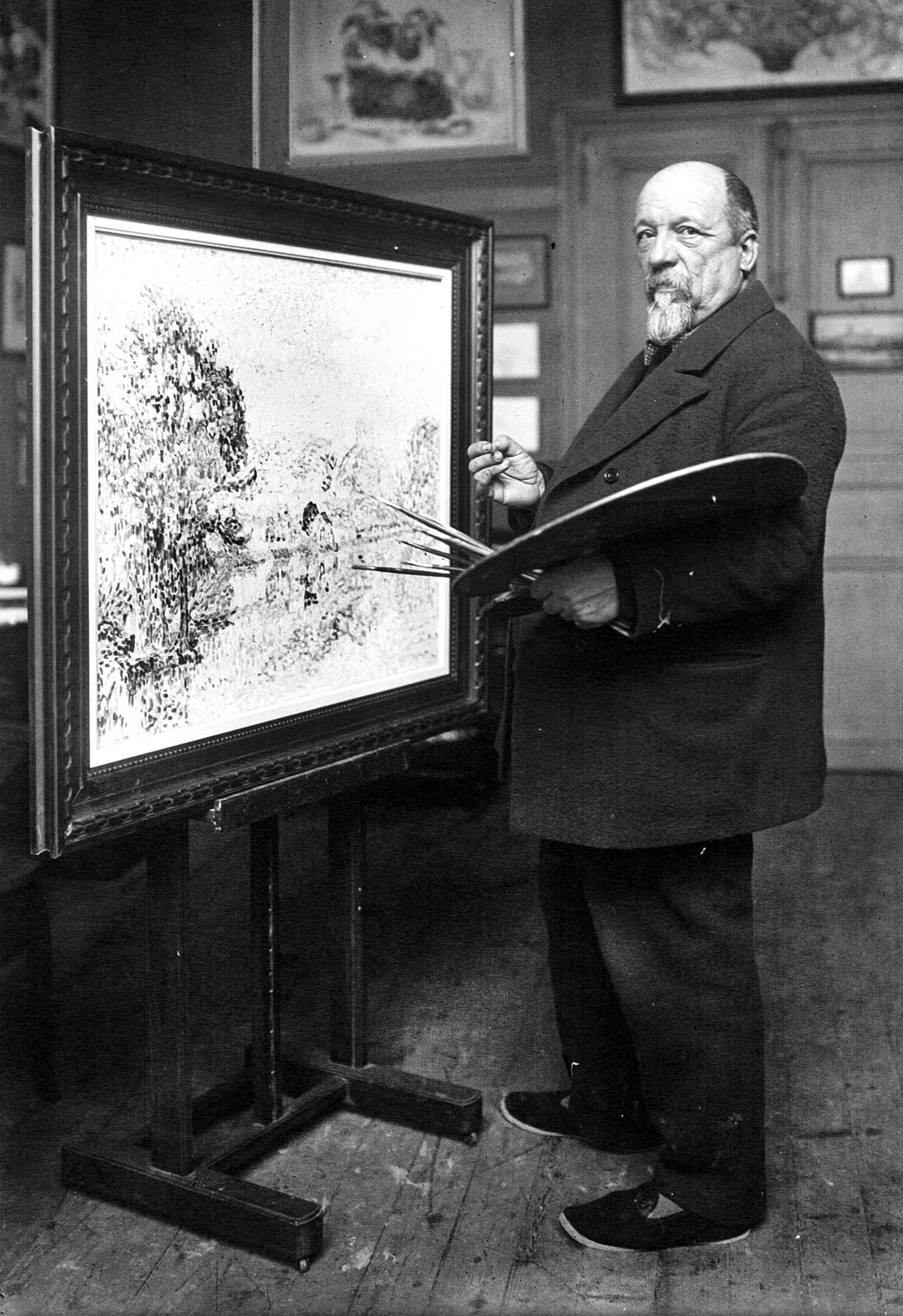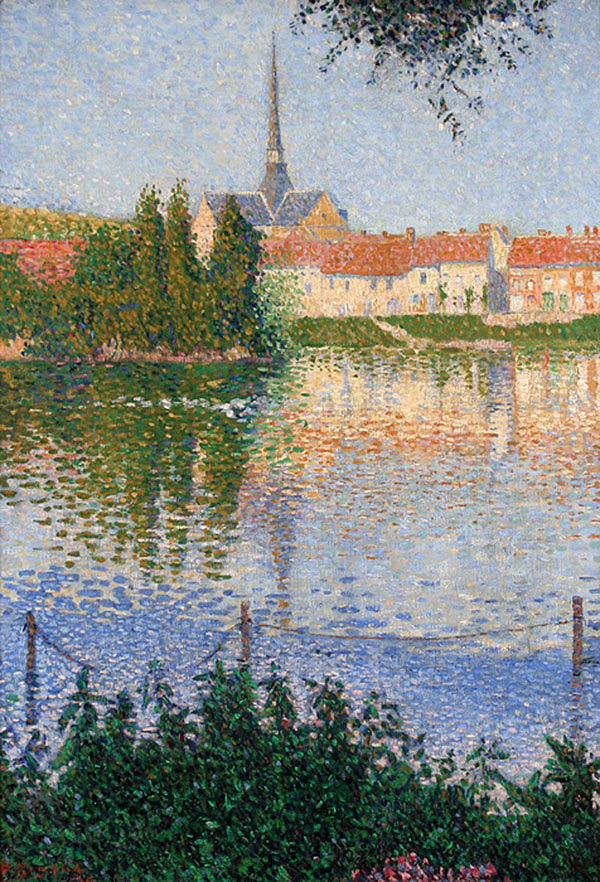PAUL SIGNAC
1863-1935 Signac was born in Paris on November 11, 1863. From a very young age, he decided to become a painter. He made his début in the last Impressionist Exhibition and his work from that time shows distinctly the influence of Monet. He studied with Blin in 1883, and the following year was one of the founding-exhibitors at the first Salon des Indépendants, through which he met Seurat.
Signac was born in Paris on November 11, 1863. From a very young age, he decided to become a painter. He made his début in the last Impressionist Exhibition and his work from that time shows distinctly the influence of Monet. He studied with Blin in 1883, and the following year was one of the founding-exhibitors at the first Salon des Indépendants, through which he met Seurat.
In the mid 1880s Signac and Seurat became close friends and the two collaborated in studying theories of painting and color, in particular the division of light in its prismatic elements. In his own work, Signac took to Pointillism, juxtaposing tiny points of color on the canvas in very precise relationships, so that the luminosity and depth of the composition is intensified, and each brush stroke acts to stimulate the eye’s perception of the overall effect. It was a highly scientific approach to painting in which the analytical study of color and the controlled application of pigment became key factors. Based on these methods, he and Seurat developed the theories of Neo-Impressionism, which was explored in depth in Signac’s book From Eugène Delacroix to Neo-Impressionism (1889). Signac rallied a group of artists that included Pissarro and many others to the cause of Neo-Impressionism and spent a great deal of time and energy in promoting it.
At about the turn of the century, Signac’s work witnessed a decisive shift from the precise pointillist technique to a more fluid, less systematic brushstroke to create small rectangles. The bold tones and his use of broader, mosaic-like patches of color are typical of his mature style. Bold, expressive brushstrokes that enliven the surface of a picture are typical of the artist’s later work.
In From Eugène Delacroix to Neo-Impressionism, Signac himself describes his process of color composition in terms of contrasts: ‘the painter, starting from the contrast of two opposing colors, modifies and balances them across the spectrum until he meets another contrast and starts the process over again. So, working from contrast to contrast, he covers the canvas.’
In addition to his many other activities, Signac was a skilled and ardent sailor. Sailing along the coast from Brittany to Provence, he was one of the first artists to discover St. Tropez, which served as home base for his voyages to Holland, Corsica, and various forts along the Mediterranean and Atlantic coasts.
From these trips he often brought back bright, spontaneous watercolors in which he can explore the relationship between a port and its reflection in the water. His application of watercolor in short horizontal, vertical and diagonal strokes not only imitates the rippling water, but the intermingling colors fuse together to project a luminescent effect of dappled sunlight rippling through the waters.
He was elected President of the Société des Artistes Indépendants in 1908 and he held the post for twenty-six years, during which he worked energetically to promote art and encourage artists. He died in Paris in 1935. He is represented in the principal museums of modern art throughout the world.
PAUL SIGNAC
Artworks for Sale
 PAUL SIGNAC
PAUL SIGNACLes Andelys, L’île à Lucas 1886
Oil
26 x 17 3/8 inches
This artwork is no longer in our inventory
Click here for more information
